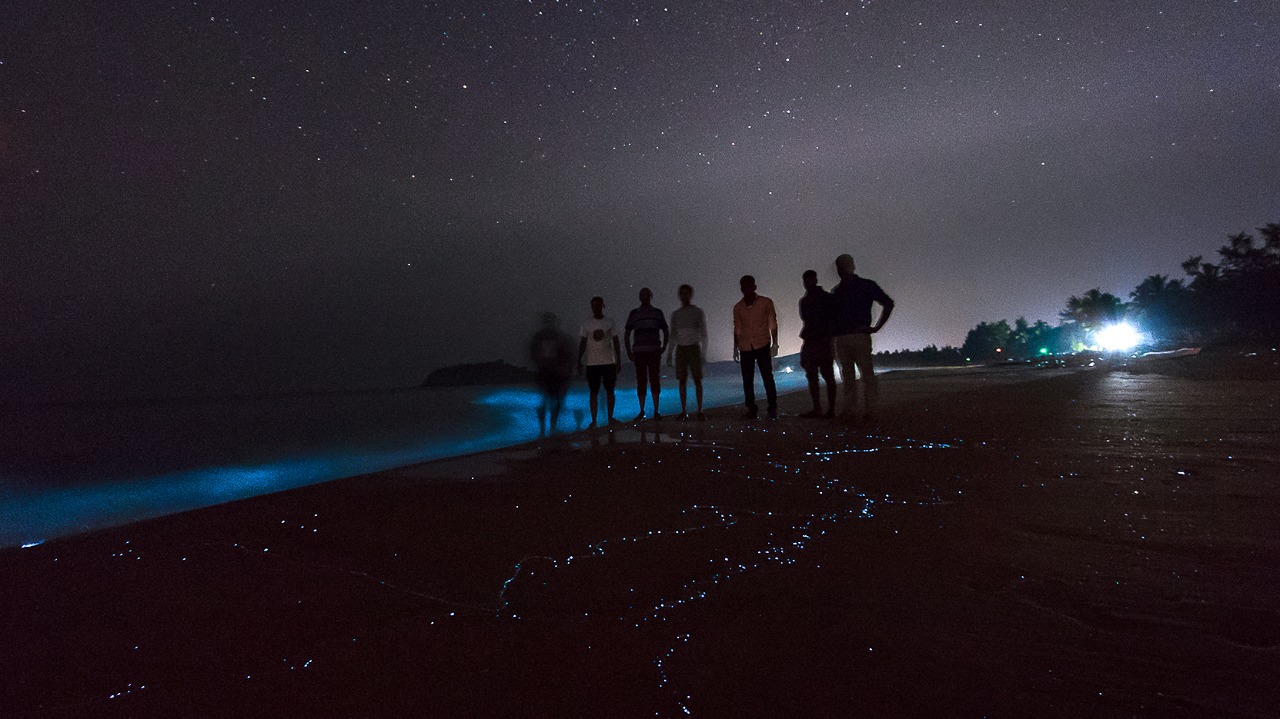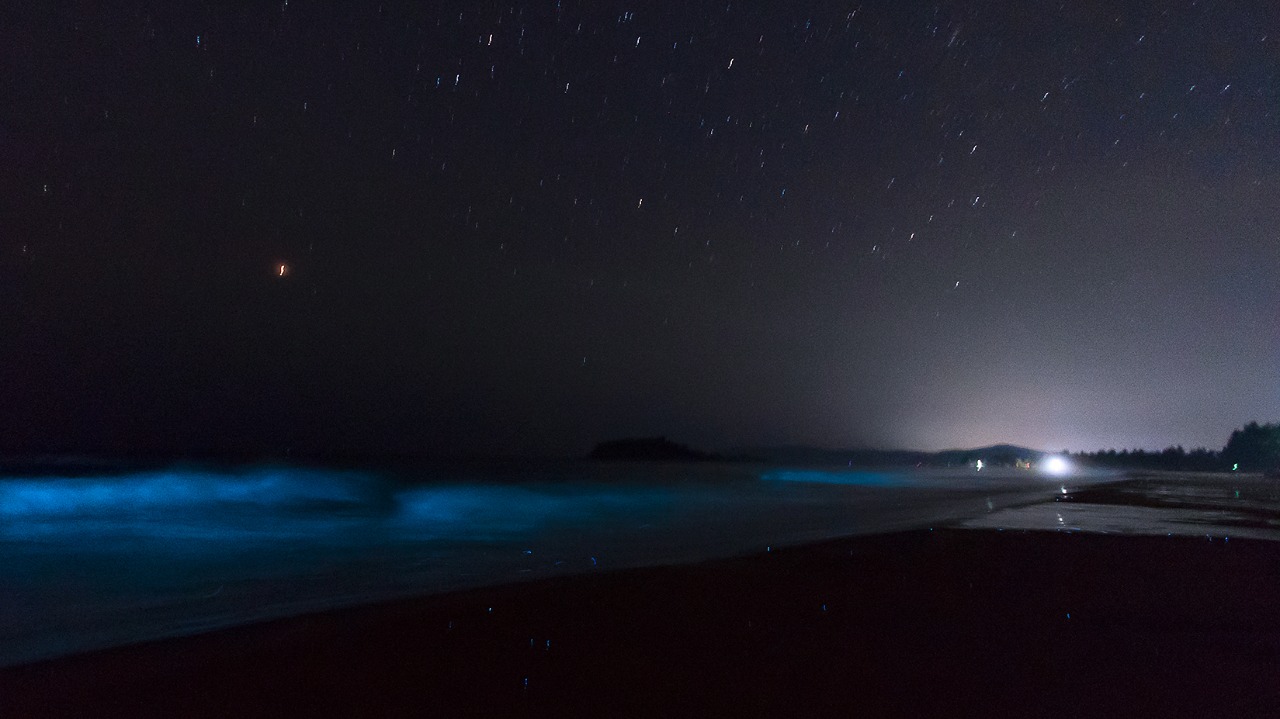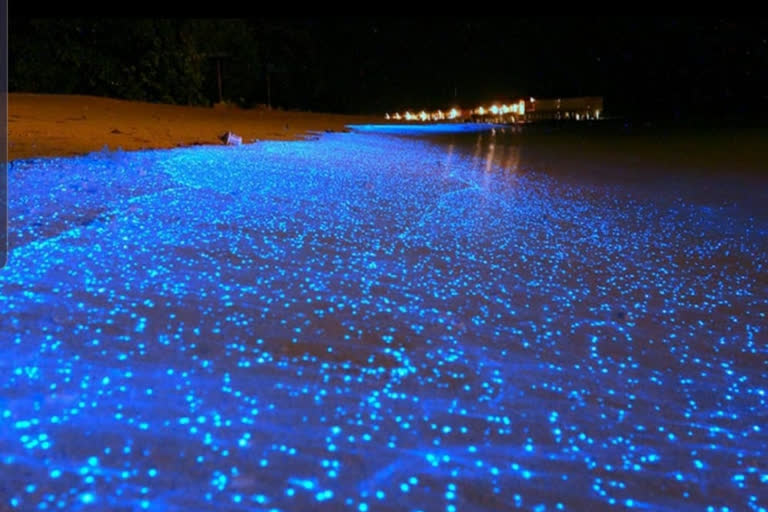Karwar (Karnataka): Radiant blue colour shimmered on the waves gently crashing down on the Karwar shore. At the night time, the blue light marvels over the Karwar seashores.
Algae are plentiful on the beach. These algae float in the ocean waves and cover a few areas. Thus the blue light in the footprints of the early morning made the viewers curious.
What is bioluminescence?

Bioluminescence is light emitted by living organisms or algae through chemical reactions in their bodies. It could also be the ghostly glow of bacteria on decaying organic matter or in the sediment/sand. The glow or sparkle in the sea is due to the bloom of dinoflagellates scientifically called Noctiluca scintillans and commonly known as the sea sparkle. This plankton is a free-living, marine-dwelling species that exhibits bioluminescence when disturbed.

Bioluminescence occurs widely in marine vertebrates and invertebrates, as well as in some fungi, microorganisms, including some bioluminescent bacteria. This phenomenon which is natural has been noticed since the last two days at Padukere, Sashihithlu and NITK Suratkal beaches, and earlier at Tannirubavi, Panambur, Ullal and Someshwara beaches.
Their arrival may not be good news for fishers. Noctiluca are known to be voracious predators of planktonic organisms. They lead to disruption of the marine food chain. They also excrete large amounts of ammonia, causing massive fish mortality.
Read: Fisheries college find plankton causing bioluminescence along Karnataka beaches



